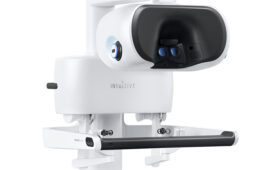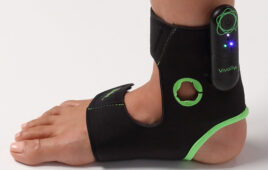 The speed at which medtech companies can innovate is a significant indicator of their success. Speed enables firms to catch trends and improve quality of care. In 2015, Boston Consulting Group released a list of the 50 most innovative companies, and although they were from all industries, several medical technology firms made the list. BCG cites overly long development times as a huge obstacle in generating returns for medtech businesses.
The speed at which medtech companies can innovate is a significant indicator of their success. Speed enables firms to catch trends and improve quality of care. In 2015, Boston Consulting Group released a list of the 50 most innovative companies, and although they were from all industries, several medical technology firms made the list. BCG cites overly long development times as a huge obstacle in generating returns for medtech businesses.
According to BCG authors, “Fast innovators are much more likely to also be strong innovators,” as well as more disruptive. They note that the benefits of speed include faster innovation, lower development costs, larger market share, and greater forecasting accuracy.
And such speed is not reserved for consumer products, alone. Medical technology is facing a crisis of healthcare. Medtech firms are feeling the push to provide better, more innovative products that focus on outcomes-based reimbursement. At the same time, they are driven to improve both patient and physician experiences, as well as reduce hospital stays, all at significantly lower costs.
Designing for speed. Companies that want to find success will aim to meet the needs of the market, which may involve refining their focus on innovation. Again, the BCG report offers four traits that innovative companies share: applying lean processes, fast prototyping and iteration, dedicated innovation staff, and following the right metrics.
Applying lean processes. Lean manufacturing is essentially shorthand for the continuous processes of improving quality and efficiency, and eliminating waste. Efficient product development dimensions include short cycles, and iterations, standardized processed, and quick modeling and testing of designs. Employing a high degree of lean processes makes for strong and fast innovation. Another BCG research project concluded that companies that deploy the principles of lean R&D reduce timelines by double-digit percentages, as well as increasing efficiency and overall value.
Prototype early for customer input. Research shows that fast innovators test prototypes with customers. It might be tough, particularly in the medtech field, but designers need to worry less about the imperfections that they know are there and focus more on the insights they can gain from customer reactions and feedback. These insights must be incorporated quickly in the next design iteration, and another prototype developed and tested. Such an adaptive approach takes advantage of the experience curve to speed up the entire process. Being able to produce prototypes quickly and at low cost enables fast and cheap failures and limits the waste created by going too far down unproductive paths.
One key is to find a prototyping partner that can quickly supply parts in a few days, not months. The prototype method must be fast enough to allow multiple iterations in a condensed time frame, and possess the scale to allow for multiple iterations at the same time, particularly for injection molding. Proto Labs offers the following advice for engaging with a prototyping outfit:
- Look for competitively priced injection molding to enable cost-effective short runs so product developers have more time to react with shorter lead times.
- Look for a provider that offers fast, automated quoting so you can get parts as soon as possible. Time is saved when you can upload a 3D CAD model online and receive an automated quote within a few hours.
- Look for prototyper that provides immediate design feedback to improve the manufacturability of the parts when the quote is delivered. This drastically accelerates the process, results in better and easier-to-manufacture products, and removes potential cosmetic or performance defects before the first parts are produced.
- Ask questions and don’t settle for answers that don’t fit you needs. Do they have the ability to execute what you ask every time? Do they have a mechanism to apply lessons learned further down the development stage? Do they possess scale to do on-demand orders? Can they closely replicate end production manufacturing methods? Do they have materials used in the medical industry and a basic understanding of medical approval processes?
Dedicate people and resources to the task. There are benefits to both centralized and decentralized innovation organizations. Some find significant value in employing design firms for innovation. What is important is to have a dedicated capacity to innovation. The BCG report puts it this way: “If innovation is 10% of 100 people’s responsibility, you can guarantee that little innovation will take place. But if it’s 100% of 10 people’s job, things will start to happen.” Putting priority on fast innovation, and properly incentivizing it is essential. Create fast-track programs, special processes, dedicated production capacity, established toolboxes, and teams to reduce time to market.
Set and follow the right metrics. Metrics that emphasize incremental progress, or progress against a single component of a larger whole, can cause individuals and teams to focus on their particular tree while losing sight of the forest. The best-performing innovators measure and incentivize teams on their overall achievement of company goals.
Fast innovators have long demonstrated that shortening innovation and product development cycles and reducing time to market can be a powerful source of competitive advantage. But a growing emphasis on speed, even among companies that are already fast, suggests that a new realization is dawning: The demand for speed is itself increasing.


![A photo of the Medtronic GI Genius ColonPro polyp detection system flagging a potential sign of colon cancer during a colonoscopy. [Photo courtesy of Medtronic]](https://www.medicaldesignandoutsourcing.com/wp-content/uploads/2024/04/Medtronic-GI-Genius-doctors-268x170.jpg)

